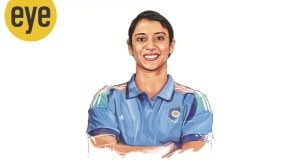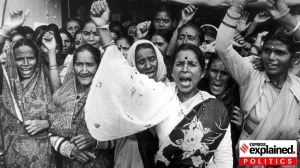Learn to defend the turf
Having shown the odds in the forthcoming WTO rounds, at this time we discuss the nitty gritty of our negotiation stance. We saw that the ...

Having shown the odds in the forthcoming WTO rounds, at this time we discuss the nitty gritty of our negotiation stance. We saw that the world is not going to let us this time take the comfortable position that we tax our agriculture (negative aggregate measure of support) and so domestic support policies are not the issue, if we do trade reform, i.e. free imports and reduce tariffs.
The first thing to do given the absolutely abysmal level of understanding of the world’s position on Indian agriculture within our bureaucracy, diplomats and even otherwise well-informed business opinion, is to set up a professionally staffed, well-funded independent and, most important, national research and consulting outfit to back up the negotiations. Such an outfit must be autonomous and domestically funded.
It must redo all the aggregate measure of support (AMS) and subsidy calculations, as also present a profile of a genuine economic and fiscal policy regime which gives a reasonable level of assurance that an adequaterate of growth is possible with a market regime in Indian agriculture. The need of redoing the calculations arises from the fact that just as the earlier estimates of AMS are now being revised, it is possible that the present ones could again need substantial revision.
The new institution must command confidence, both at home and abroad. This group must clearly set the agenda, not as decided abroad and negotiated by the kind of people who did us in at Marrakesh. India has the developmental experience and the capability to set the agenda for development on a global plane.
This must mean that India must rationalise its subsidy structure, but those subsidies which help farmers in adverse agroeconomic regions to adopt growth policies by land and water management strategies, appropriate cropping sequences and more value added must be assured technological support, credit backup and marketing and processing infrastructure.
Subsidies for dryland and rainfed areas and for small and marginal farmers havetherefore to be kept out of the calculations used for negotiation purposes. There is a perfectly valid case for this, as the discussions we reported at the ADB meeting showed, and it must now be forced through at the cutting edge.
A similar treatment has to be argued out for expenditure on food security. At Rio, Ignacy Sachs had characterised my argument then as the case for meeting “front up” costs for sustainable development. The argument is more compelling today. We cannot forever be at the receiving end in the environment debate. If the arguement is not agreed to, let the critics show what their arguments imply for soil erosion, water degradation and loss of forest cover from poor communities, searching for fuel and fodder.
I was violently opposed to zero tariff bindings for rice, fruits, milk and so on. I argued then that this would handcap the entire process of the diversification of Indian agriculture. Within the country it would hurt more the diversifying agrarian economies of states likeGujarat, Maharashtra, Karnataka, Kerala and West Bengal, where land is being shifted from cereals to cash crops. This has happened if you look at the trade and output statistics and we must argue for decent tariffs for these commodities.
Further export subsidies and import quotas used against us have to be vigorously fought. It is extremely likely that if we play our cards well, the US will go along with us on this.
Where are the free trade protagonists when extremely unfair phytosanitary restrictions are placed on our farm exports? The negotiations have to be conducted in regional terms. The restrictions are completely arbitrary, because there is very little scientific data. The Third World has to fight the imposition of standards with no data from their own economies. The same argument applies to a whole host of non-tariff barriers.
The chairperson of the NDDB has been documenting the case of milk and dairy products meticulously. If child labour is to be banned, then countries like India should beallowed to set tariff restrictions with the World Bank’s dollar-a-day wage level built into the agricultural wage-price calculations. India can always be with the Third World peasant and artisan and it is its historical duty to expose the double standards of those who would exploit and then preach.
FAO and World Bank studies have documented that in a number of cases post-Uruguay round tariff protection in a number of cases is now higher than the late eighties. Many of these are of interest to India. More generally, if present trends continue, the net benefits of trade liberalisation will be very low and particularly for India.
Most countries are preparing for a cut-throat battle on the negotiating table. India remains an exception.
Finally, the most important issue is the domestic policies to synchronise with the trade strategies. It amazes me to see that we are engaging in major steps of trade liberalisation without cleaning up our own policies. The poultry and dairying sectors have to compete fiercelywith countries which give massive subsidies, but their imports of chemicals and so on are still protected, so they suffer doubly. Domestic excises and taxes still hurt them. There is no worthwhile infrastructure support plan. When will we get our act together?



- 01
- 02
- 03
- 04
- 05




























